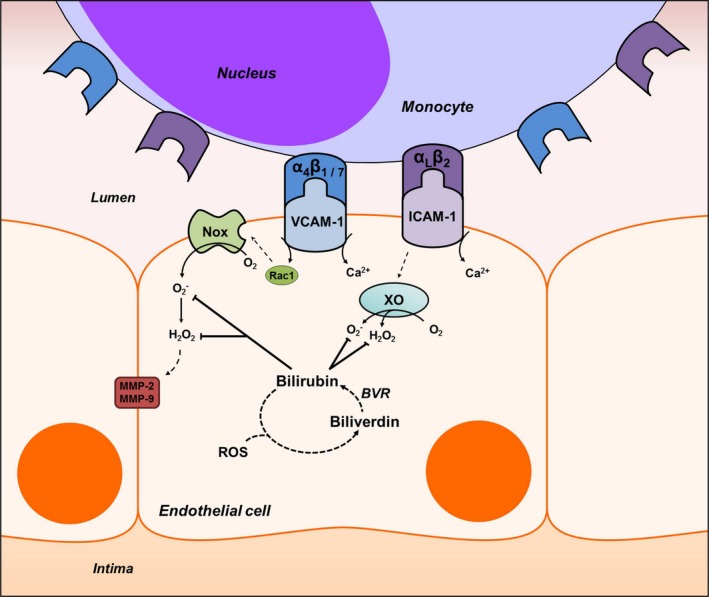Figure 12.

Proposed mechanism of bilirubin modulation of VCAM‐1‐ and ICAM‐1‐dependent monocyte migration. Ligation of VCAM‐1 and ICAM‐1 with their corresponding integrins, α4β1/α4β7 and αLβ2, leads to Rac‐1‐ and calcium (Ca2+)‐dependent activation of NADPH oxidase (Nox) and xanthine oxidase (XO). These enzymes generate the reactive oxygen species (ROS), superoxide (O2˙−) and hydrogen peroxide (H2O2), that comprise a signaling cascade, which leads to activation of matrix metalloproteinases (MMP)‐2 and ‐9 and disruption of endothelial tight junctions. Bilirubin, a potent antioxidant that undergoes intracellular redox cycling (dashed lines) through action of biliverdin reductase (BVR), scavenges Nox‐ and XO‐derived ROS, thereby inhibiting leukocyte migration. ICAM‐1 indicates intercellular adhesion molecule 1; Rac1, Ras‐related C3 botulinum toxin substrate 1; VCAM‐1, vascular cell adhesion molecule 1.
